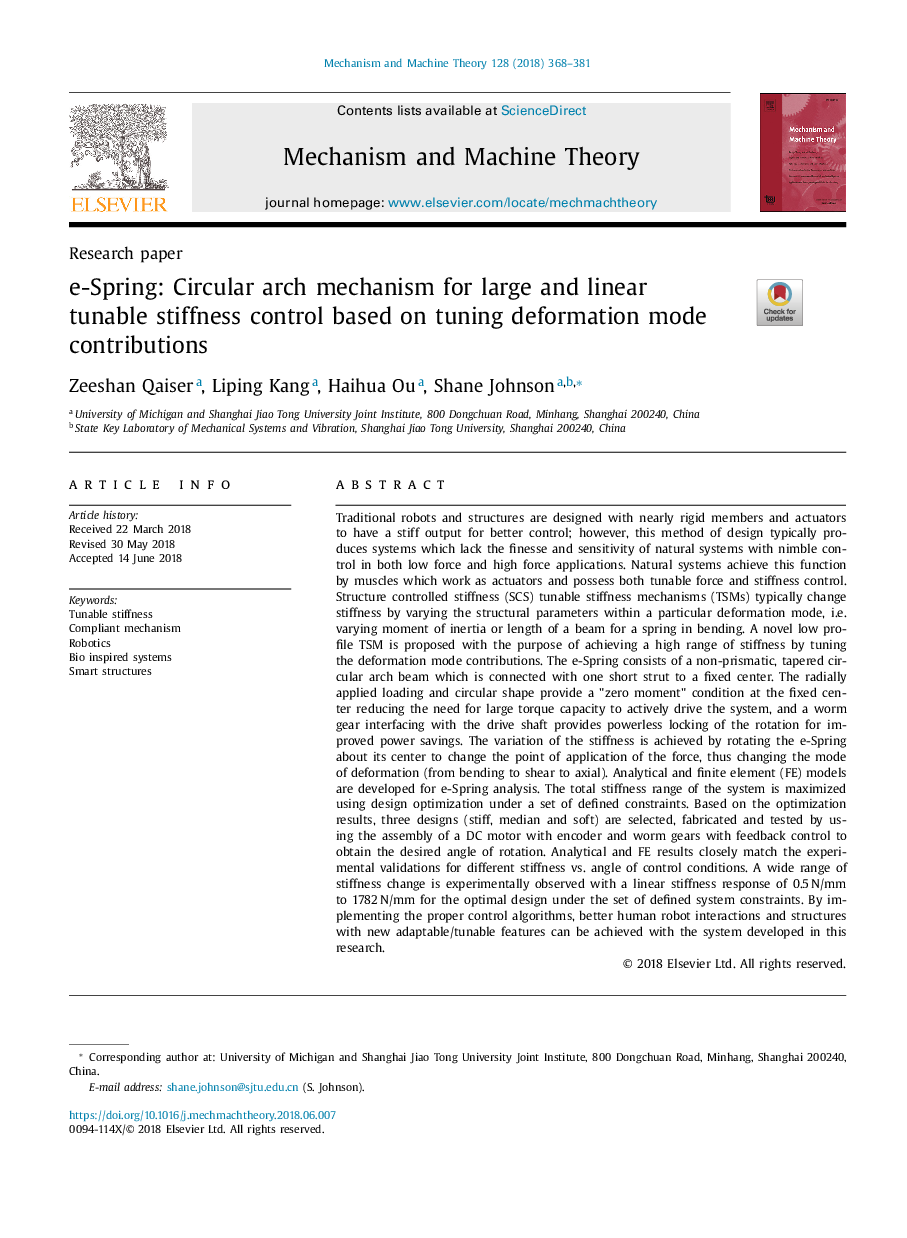| کد مقاله | کد نشریه | سال انتشار | مقاله انگلیسی | نسخه تمام متن |
|---|---|---|---|---|
| 7178943 | 1467707 | 2018 | 14 صفحه PDF | دانلود رایگان |
عنوان انگلیسی مقاله ISI
e-Spring: Circular arch mechanism for large and linear tunable stiffness control based on tuning deformation mode contributions
دانلود مقاله + سفارش ترجمه
دانلود مقاله ISI انگلیسی
رایگان برای ایرانیان
کلمات کلیدی
موضوعات مرتبط
مهندسی و علوم پایه
سایر رشته های مهندسی
مهندسی صنعتی و تولید
پیش نمایش صفحه اول مقاله

چکیده انگلیسی
Traditional robots and structures are designed with nearly rigid members and actuators to have a stiff output for better control; however, this method of design typically produces systems which lack the finesse and sensitivity of natural systems with nimble control in both low force and high force applications. Natural systems achieve this function by muscles which work as actuators and possess both tunable force and stiffness control. Structure controlled stiffness (SCS) tunable stiffness mechanisms (TSMs) typically change stiffness by varying the structural parameters within a particular deformation mode, i.e. varying moment of inertia or length of a beam for a spring in bending. A novel low profile TSM is proposed with the purpose of achieving a high range of stiffness by tuning the deformation mode contributions. The e-Spring consists of a non-prismatic, tapered circular arch beam which is connected with one short strut to a fixed center. The radially applied loading and circular shape provide a "zero moment" condition at the fixed center reducing the need for large torque capacity to actively drive the system, and a worm gear interfacing with the drive shaft provides powerless locking of the rotation for improved power savings. The variation of the stiffness is achieved by rotating the e-Spring about its center to change the point of application of the force, thus changing the mode of deformation (from bending to shear to axial). Analytical and finite element (FE) models are developed for e-Spring analysis. The total stiffness range of the system is maximized using design optimization under a set of defined constraints. Based on the optimization results, three designs (stiff, median and soft) are selected, fabricated and tested by using the assembly of a DC motor with encoder and worm gears with feedback control to obtain the desired angle of rotation. Analytical and FE results closely match the experimental validations for different stiffness vs. angle of control conditions. A wide range of stiffness change is experimentally observed with a linear stiffness response of 0.5â¯N/mm to 1782â¯N/mm for the optimal design under the set of defined system constraints. By implementing the proper control algorithms, better human robot interactions and structures with new adaptable/tunable features can be achieved with the system developed in this research.
ناشر
Database: Elsevier - ScienceDirect (ساینس دایرکت)
Journal: Mechanism and Machine Theory - Volume 128, October 2018, Pages 368-381
Journal: Mechanism and Machine Theory - Volume 128, October 2018, Pages 368-381
نویسندگان
Zeeshan Qaiser, Liping Kang, Haihua Ou, Shane Johnson,